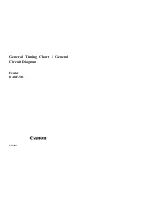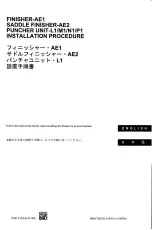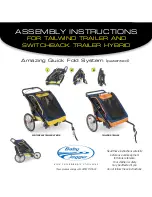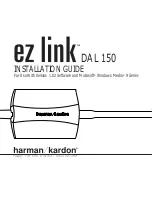
39
Regulatory Compliance Information
══════════════════════════════════════════════════════════════
FCC Rules Part 68
Statement of Compliance: The ASAP 104 complies with Part 68 of the FCC rules and the requirements adopted by the ACTA. On
the underside of this equipment is a label that contains, among other information, a product identifier in the format
US:AAAEQ##TXXXX. If requested, this number must be provided to the telephone company.
USOC: When ordering service from the telephone company for the equipment the following information should be supplied:
Universal Service Order Code (USOC): RJ11C or RC13C
Plug and Jack:
The plug and jack used to connect this equipment to premise wiring and telephone network must comply with the
applicable FCC Part 68 rules and requirements adopted by ACTA. A compliant telephone cord and modular plug is provided with
this product. The telephone cord is designed to be connected to a compatible modular jack that is also compliant. See installation
instructions for details.
Ringer Equivalency Number (REN):
The REN is used to determine the number of devices that may be connected to a telephone
line. Excessive RENs on a telephone line may result in the devices not ringing in response to an incoming call. In most but not all
areas, the sum of the RENs should not exceed five (5.0). To be certain of the number of devices that may be connected to a line, as
determined by the total RENs, contact the local telephone company. The REN for the equipment is part of the ACTA/FCC number
that has the format US:AAAEQ##TXXXX. The digits represented by the ## are the REN without the decimal point (e.g., 01 is a
REN of 0.1) and are followed by the Ringer Class (A or B).
Harm to the Network:
If this equipment causes harm to the telephone network, the telephone company will notify you in advance
that the temporary discontinuance of service may be required. But if advance notice isn’t practical, the telephone company will
notify the customer as soon as possible. Also, you will be advised of your right to file a complaint with the FCC if you believe it is
necessary.
Notification of Changes in Telephone Company Equipment:
The telephone company may make changes in its facilities,
equipment, operations or procedures that could affect the operation of the equipment. If this happens, the telephone company will
provide advance notice in order for you to make necessary modifications to maintain uninterrupted service.
Repairs or Returns:
If trouble is experienced with this equipment, for repairs or warranty information, contact Command
Communications at 800-288-6794. If the equipment is causing harm to the telephone network, the telephone company may request
that you disconnect the equipment until the problem is resolved. Only a qualified factory representative should make repairs.
Party Lines:
This equipment must not be used on party lines.
Alarm Equipment:
You should ensure that this equipment does not disable alarm equipment in installations where the alarm
equipment utilizes the same telephone network connection as this equipment. If you have questions about what will disable the alarm
equipment, consult your telephone company or a qualified installer.
Electrical Safety Advisory:
Telephone companies report that electrical surges, typically lightening transients, are very destructive
to customer terminal equipment connected to AC power sources. This has been identified as a major nationwide problem. A
commercially available, power surge arrestor is recommended for use with this equipment to minimize damage in the event of an
electrical surge.
══════════════════════════════════════════════════════════════
FCC Rules Part 15
Note: This equipment has been tested and found to comply with the limits for a Class B digital device, pursuant to Part 15 of
the FCC rules. These limits are designed to provide reasonable protection against harmful interference in a residential
installation. This equipment generates, uses and can radiate radio frequency energy and, if not installed and used in
accordance with the instructions, may cause harmful interference to radio communications. However, there is no guarantee
that interference will not occur in a particular installation. If this equipment does cause harmful interference to radio or
television reception, which can be determined by turning the equipment off and on, the user is encouraged to try to correct
the interference by one or more of the following measures:
Reorient or relocate the receiving antenna.
Increase the separation between the equipment and receiver.
Connect the equipment into an outlet on a circuit different from that to which the receiver is connected.
Consult the dealer or an experienced radio/TV technician for help.
CAUTION: Changes or modifications not expressly approved by the manufacturer could void the user's authority to
operate the ASAP 104.


































